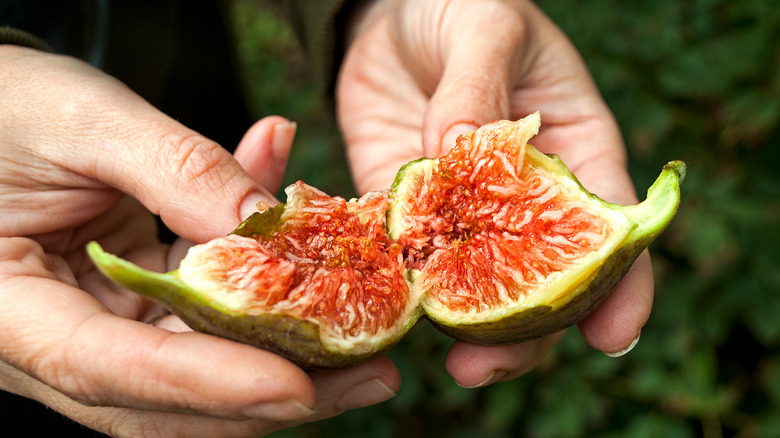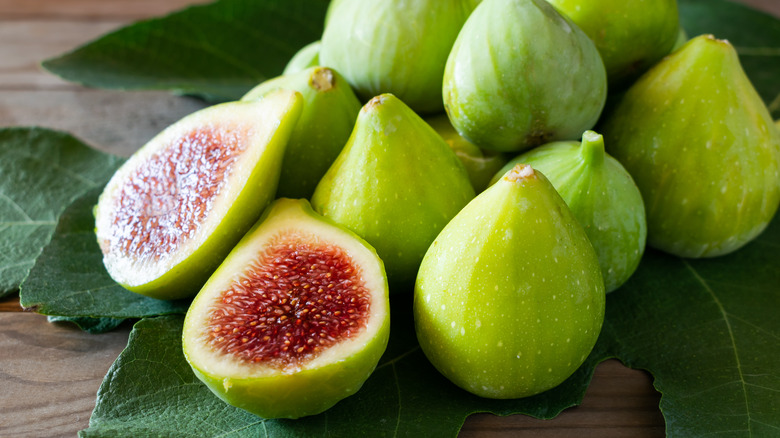The Types Of Figs You Should Peel Before Eating
You'd be surprised about what you could do with a simple fig. Many of us have enjoyed them raw or dried, but the fig (Ficus carica) is amazing when chopped into a late-summer salad, roasted into a fig agrodolce, or made into a fig and goat cheese tart. While often used and seen as a fruit, figs are really inverted flowers, according to Food Print. This fruity flower is native to the Middle East, stretching back 11,000 years to the Mesopotamian civilization which was presumably the first to cultivate them.
This ancient fruit comes in a variety of shades ranging from dark purple to spring green and the inner pulp is full of gorgeous wine-colored seeds which those of us fig-lovers crave every harvest season. When late summer rolls around, it might be all too easy to stock up on figs at the farmer's market or from a friendly neighbor's tree, but before you sink your teeth into the skin of those delightful fruits, take a moment and identify which kind they are. Some figs have skin that you don't want to chew through.
Figs with tough, bland skin should be peeled
Mistakenly, some people might believe that all fig skins are edible. Now, they won't poison you or make you feel sick, but some fig skins are not enjoyable to eat. Adriatic figs are one variety you may have had the opportunity to eat raw or dried and found it easy to bite through their tender skin to a jam-like center (via the LA Times. However, there are a few varieties you should take the effort to peel, such as Kadota figs and Calimyrnas, which have rather tough, green, flavorless skins.
Peeling a fig isn't as daunting as it might first seem. Bites for Foodies breaks it down into a few simple steps that will have you easily remove the skins from your figs in no time. First, remove the stem and, using a sharp knife, score the top of the fig in the shape of an X. After that, peel back the sections you've created and make cuts between the skin and the pulp. From there, continue cutting until all of the skin has been removed or hand-peel it. You can then mix the pulp of the fig into your yogurt, blend it into a smoothie, or turn it into a jam.

